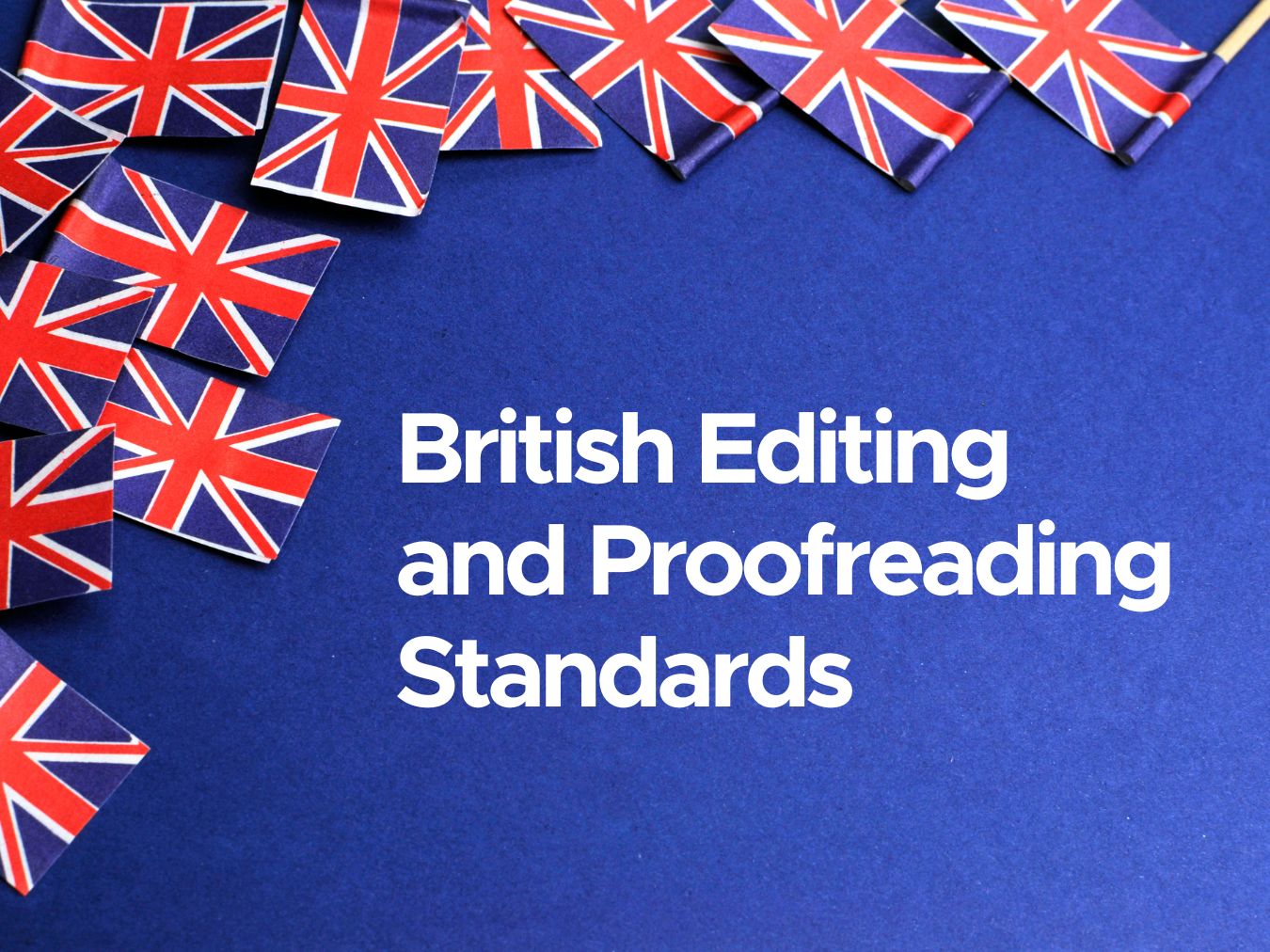The widespread adoption of British editorial standards is a major inspiration for quality in international publishing. UK-based editors and proofreaders have been consistently strong for decades, so let’s look at why.
The Global Adoption of British Editorial Standards
So why exactly is it important to have consistent standards in editing, proofreading, and publishing? Well, when you think about it, there are so many things around the world being written (or nowadays being typed, to be specific). There are books, magazines, websites, and more that need to get general information across, and it doesn’t stop there. If you purchase a piece of furniture with assembly instructions, someone has to write those instructions. When you buy frozen food that needs to be put in the oven to be cooked, the cooking instructions are written. Someone had to present this fundamental information in a way that various people could understand. That goes for the type of general content you see at the end of websites and the information you see when you turn to the page in a book that is telling you about the book (this is called “metadata” and includes things like the chapter name, publisher information, and dates).
There have to be pre-agreed rules that everyone writing these pieces of information knows they have to follow. This is where standardization comes in.
Just like how in every country in the world, cars stop at the red light and go at the green light, there are generally agreed-upon symbols, rules, and customs that writing, editing, and proofreading have to follow. As a matter of fact, the reason you are able to comfortably read this article and navigate this website is that, in writing this content, we are following the predetermined rules of the English language (we aren’t just making up random combinations of letters and symbols that don’t have a widely understood meaning).
In order to make sure everything written in the English language is recognizable universally (allowing for differences in UK English and American English), there needs to be a set of editing and proofreading standards. This means that there are conventions and rules to follow to make sure that the quality of international publishing can be assured.
When it comes to the relationship between the writer and the editor, the two individuals need to be able to communicate effectively, so when the editor is giving feedback to the writer, the writer can understand what changes need to be made. This is why there needs to be a proofreading standard across the board. The British Standard for proofreading markswas created in 1976 and acted as a key for editors on how to signify the necessary changes needed for writers. Keep in mind that this was at a time well before there was desktop publishing, and this had to be done by hand. It would be incredibly difficult for a writer to decipher random symbols the editor just made up, so the British Standard was brought in. This standard for proofreading was widely recognized worldwide. The International Organization for Standards brought in a set of acceptable proofreading symbols in the 80’s, with updated versions in 2016 and 2022 (as there was a need to update due to the advent of desktop publishing). These standards were heavily influenced by British standards.

So we can see from the last century that the way of doing things by British publishers was widely respected and still is today, despite challenges. The same can be said for the reputation of British publishers.
UK-Based Editors and Proofreaders Reputation
UK publishing has gained a strong reputation for itself. The UK publishing industry brings in over £6 billion, and about 60% of that comes from the export market. This indicates that selling books to nations outside of the UK, such as the USA, Australia, and European Union states, generates almost half of the publishing industry’s revenue. The UK exports more books than any other country. Books published in the UK have a great influence on media globally too, with many of the best-selling books being turned into films and TV shows that are popular around the world. This success comes from establishing and justifying their good reputation on the international scene.
Why, then, is UK publishing so popular with such a strong reputation? Part of the reason the UK publishing industry brings in billions of pounds from the export market each year is that they are used to publishing on a large scale in a flexible manner. In the UK, there are hundreds of thousands of books published each year and distributed, with many going abroad. As well as this, the UK publishing industry has become an expert in digital publishing. UK publishing continues to grow and is forecast to keep growing. So, what makes their editing and proofreading standards so good?
Editing vs Proofreading
Before we get into British editorial standards worldwide for proofreading and editing, let’s establish the difference between those two things.
Editing is more about the content itself, while proofreading revolves around technical things. Editing can be divided into:
- Copy editing
- Line Editing
- Substantive editing
Copy editing is mainly about improving the readability of what is written, but it is also used broadly to cover other types of editing. Line editing involves focusing on individual sentences and paragraphs to make sure they are the best they can be. Substantive editing looks at the structure of the content and how it is organized, so it might entail changing the order of headings or recommending that content be removed or added in.
Editors aren’t allowed to actually rewrite the text to change the meaning, but they can make adjustments and clarifications. When it comes to editing, the editor will generally make at least two passes at a piece, but usually more. The editor will correct basic things and make suggestions to the author about how they can improve what they have written.
Proofreading involves the correction of errors in layout and physical structure. For example, if there is an extra space or unneeded punctuation, the proofreader will take it out. They will also ensure consistency with the font choices and that the margins are set right.
Generally, nowadays, the editor will do all the necessary editing and proofreading while making suggestions for the writer. The terms are used interchangeably sometimes, but there are differences. At The Urban Writers, we have many skilled editors who can ensure your masterpiece meets the high standards of quality maintenance in international publishing.
British Editorial Standards Worldwide
So, what are the editing and proofreading standards that are looked upon as being of such high quality in international publishing? We can look to the Chartered Institute of Editing and Proofreading to see the standards that the UK editors’ reputations are built on.
The first thing that is laid out in their code of practice is that an editor should be sure that they are capable of doing the job at hand. The editor needs to be sure that they are competent enough in their role as an editor to go through with the editing and that they have the correct training for the type of edit they are doing. They also have to be able to confidently say they have the necessary equipment, which would generally be a working computer and any necessary software (the editor would obviously need to have a reliable internet connection if working remotely). Before starting, the editor should also establish with their client what type of editing they need, the extent of the editing, and if their client wants intrusive editing or any kind of structural editing. Good communication is an important element of British editorial standards worldwide and in Britain. The same can be said for proofreading. Generally speaking, somebody hired to do editing will also do proofreading, but it is important that it is established what the client wants. Again, the person doing the proofreading should understand the basics of proofreading.
In addition to communication being important, the editor needs to take it upon themselves to ensure that they have all the information they need from the client. Another thing to be sure of is reliability and punctuality, as this is important for UK-based editors’ and proofreaders’ reputations (as it is for editors and proofreaders around the world).
Naturally, for someone to edit in English, they have to have a strong command of the English language, and in particular, the dialect and type of language being used. Some publications may need very technical scientific language; some may be very formal, while others may be colloquial and informal. The editor needs to have a good working level of the language needed. They also need to have a strong grasp of the rules of grammar and how punctuation works.

Editors need to be aware of the client’s house style guide (the established rules, such as whether to use abbreviations or Oxford commas). The editor also needs to be aware of consistency in language; for example, if the language is drastically changing in tone for one paragraph, that would be something to flag. It is important that the language style is appropriate for the target audience. Editors also need to draw attention to potential inaccuracies in facts or spellings of names.
From a structural point of view, an editor will need to pay attention to any inconsistencies in the types of headings or content. So, they should check that subheadings are smaller than main headings (and get progressively smaller) and that there are no mistakes with the order of content (such as a middle paragraph starting with “Finally…” if there are more paragraphs following that are making further points). As well as this consistency in page numbers, chapter numbers, and any other ordered content.
While editing is usually done online in the modern day and age, there may be times when it is necessary to edit with pen and paper. It is important that the handwriting is neat, tidy, and easily legible. The notations and symbols used should be the universally agreed-upon ones. The reputation of the UK-based editors and proofreaders is strong because they consistently do these things very well.
When it comes to publications produced specifically for the web, there are additional considerations. For one thing, hyperlinks need to be considered. It is usually best to have hyperlinks incorporated directly into a sentence, like this one, and not have them overlap across sentences. The editor should make sure that all the multimedia on the page is accessible; for example, they should check if the videos are able to play. When it comes to images, part of proofreading involves checking alternative descriptions (known as alt tags). And it is important to check that the piece being published is categorized correctly and shown on the intended page.

Regardless of where something is being published, the person doing editing and proofreading needs to understand the conventions of formatting for the type of publication. So, whether it’s a book or a website, they need to have a good idea of what the correct protocol is.
In order to ensure high quality in international publishing, it is important that editors are open to constructive feedback. They should provide feedback to writers in a constructive way and take on board helpful feedback too.
Quality Maintenance in International Publishing
While publishers use British editorial standards worldwide, there are other general conventions that publications need to follow. There is a certain way of including necessary information, such as copyright pages, title pages, and additional pages that are used ahead of the actual book content. It is important to be aware of conventions and best practices in publishing. This ensures that the content of your book is easy to follow and makes structural sense.
Final Words
The global adoption of British editorial standards has inspired a high level of quality in international publishing. The reputation of the UK-based editors and proofreaders is strong due to their editors ensuring they follow the appropriate conventions. In order to ensure quality maintenance in international publishing, it is important that publishers follow acceptable conventions in their publishing work.













